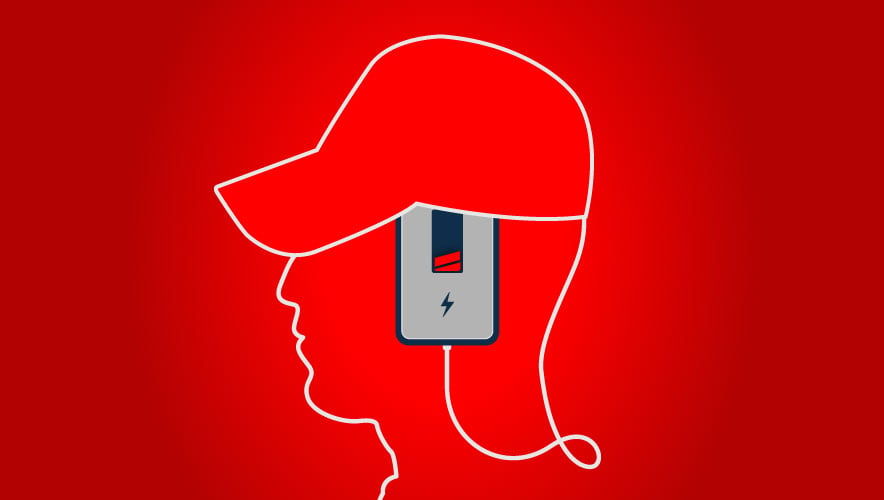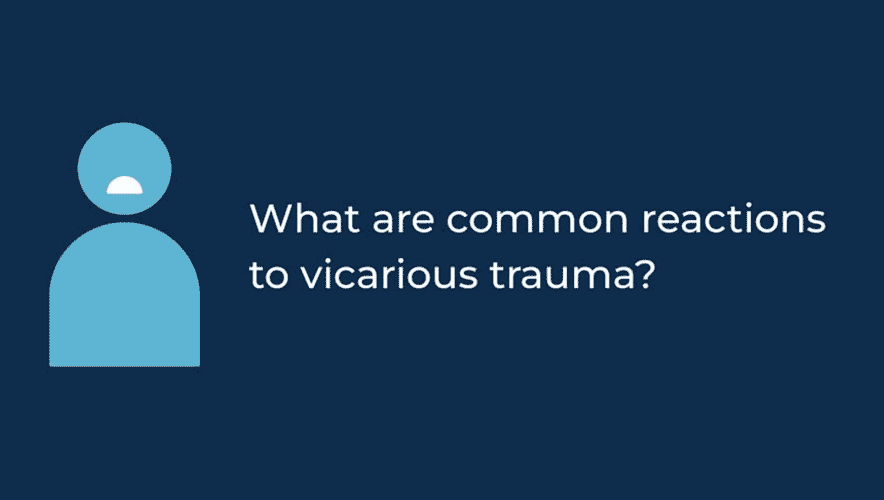How to Shore Up Personal Resilience Against Vicarious Trauma
Some stories hit harder than others. Whether it’s the news that a grandfather was scammed out of his retirement fund, or a child was the victim of a crime, or civil unrest is displacing thousands of people and putting them at risk of starvation, security professionals and investigators are often confronted by heart-wrenching scenarios. While many security practitioners and analysts can maintain objectivity and a professional distance from these tales of woe, it only takes one incident that resonates to tip even the most practiced professionals into a state of stress and, potentially, trauma.
This is because trauma—including indirect trauma, where the victim is exposed to others’ traumatic incidents and stories—is cumulative, and repeated exposure to troubling situations and news can wear down a person’s natural emotional resilience, says Diana Concannon, PCI, a forensic psychologist and dean of the California School of Forensic Studies at Alliant International University.
The Direct Effect of Indirect Trauma
Indirect trauma changes a person’s inner worldview as a result of bonding with a victim (even one you have never met) over his or her traumatic experience, Concannon says. This could negatively distort a person’s worldview, convincing them to believe that people will all behave badly, or criminal activity is a default, or significant violent incidents are inevitable. It could be a result of secondary trauma—where the effect is immediate in response to a single event—or vicarious trauma, which builds up gradually. The path to indirect trauma is rarely linear, she notes, but sometimes a particular incident strikes a chord that makes it easier to empathize and relate with a victim (such as if the victim looks like your grandma or if a child the same age as yours is injured), potentially causing a spontaneous reaction.
According to the Office for Victims of Crime (OVC), a division of the U.S. Department of Justice, “Vicarious trauma is an occupational challenge for people working and volunteering in the fields of victim services, law enforcement, emergency medical services, fire services, and other allied professions, due to their continuous exposure to victims of trauma and violence. This work-related trauma exposure can occur from such experiences as listening to individual clients recount their victimization; looking at videos of exploited children; reviewing case files; hearing about or responding to the aftermath of violence and other traumatic events day after day; and responding to mass violence incidents that have resulted in numerous injuries and deaths.”
People can experience vicarious trauma in a number of ways, from negative reactions (psychosocial symptoms, including critical incident stress or compassion fatigue) to neutral ways (a sign that an individual is managing traumatic material effectively, not that it has no effect) to positive reactions. This latter response is also called vicarious resilience, a state in which the individual “may draw inspiration from a victim’s resilience that strengthens their own mental and emotional fortitude,” the OVC said.
People who work with survivors of trauma or violence are at risk of being negatively impacted by vicarious trauma, and some factors make people more susceptible, including prior traumatic experiences, social isolation, a tendency to avoid feelings, lack of preparation or supervision at work, being newer or less experienced at the job, constant and intense exposure to trauma with little or no variation in work tasks, and a lack of effective and supportive processes for discussing traumatic content. The Vicarious Trauma Toolkit from the OVC noted that people in professions that help others—such as first responders, doctors, social workers, therapists, and victim services professionals—are at high risk of vicarious trauma.
According to compassion fatigue expert Francoise Mathieu’s 2011 book, The Compassion Fatigue Workbook, between 40 and 85 percent of “helping professionals” develop vicarious trauma, compassion fatigue, or high rates of traumatic symptoms, including post-traumatic stress disorder (PTSD).
“It’s really helpful for any managers in the security space to know that when we are dealing with someone who may be diagnosed with PTSD, it’s often not what the Hollywood script looks like,” says Marisa Randazzo, executive director of threat management at Ontic and former chief research psychologist for the U.S. Secret Service. “In a few cases, we see someone who is startled, who is having flashbacks or feels they are living under constant threat, but oftentimes what we see instead is something that is lower level but a lot more chronic.”
In cases that Randazzo has worked throughout her career, security professionals operating with PTSD exhibited symptoms that are not the stereotypical image of traumatization but were more subtle: a lot of sick leave, increased physical ailments, or sleep disruption. “People would wrestle with these symptoms for years,” she says.
While some of the behaviors and symptoms may be similar, vicarious trauma and resulting compassion fatigue is different from burnout. Burnout is the result of broader, unrelenting stressors over a long period of time—such as an unsupportive workplace, long stretches of stress with few breaks, or an unfair culture—that affects energy levels, engagement with work, and personal fulfillment. In comparison, vicarious trauma is emotionally driven and brought about specifically by the subject matter the person is exposed to, and it brings out feelings of fear and anxiety that can eventually wear security professionals down and compromise their ability to function well.
Randazzo notes that this has impacted colleagues in the national security space, as well as analysts and investigators. “The pressure to be on the lookout for national security threats can feel overwhelming. And it has a cumulative response, so you may have worked in the field for 10 years with no problem, but all of a sudden feel like you can’t handle the work anymore,” she says.
Security analysts and forensic investigators are at risk here, especially because of the nature of aberrant, extreme, or disturbing material they are exposed to as they search for evidence or data to work with. This can often be the case for analysts digging into extremist content online or for people investigating child abuse, exploitation, or trafficking.
“This—appropriately—is traumatizing to a normal psyche,” Concannon explains. “It is disturbing, and it’s very insidious as to its effect on the psyche. We often think that we can compartmentalize our ability to work with such material, and to a certain extent that is true—we can intellectualize it, we can look at it objectively, and that’s what we have to do. But to think that we are in some way immune or that we can separate ourselves from our emotional body as we’re doing that process is a distortion. We’re still a whole human as we’re looking at this material. Over time, we start to have a distorted worldview, because what we’re exposed to becomes our reality. And if we are constantly exposed to material that is slanted in a particular way, that is showing a side of humanity that is not the most favorable, that is looking at people behaving badly, our perception of the world can start to tilt in such a way so that our expectation is that people generally are going to behave that way. And depending on information we’re sorting through, we can expect people to behave in an especially heinous way.”
While many people may have a high level of resilience against this distortion, it is not invincible, she notes. The rate at which resilience is depleted from vicarious trauma is on a continuum—it’s not a straight line, and it varies by individual. A person’s ability to cope with vicarious trauma and repeated exposure to traumatic material depends on many factors, including personality, background, and the availability (or lack) of supportive social and professional resources.
“None of us are immune to it,” Concannon says. “And also, none of us are doomed by it. We all have the same continuum of resilience and depletion, but how we are calibrated on those continuums are different. That depends on our past experiences, our support systems, and—this is the good news—how we manage our exposure to traumatic intelligence. We have the opportunity to consistently build up our resilience and proactively get in front of any vicarious trauma response.”
What to Look for
Vicarious trauma can affect people on personal and professional levels, according to the OVC, with physical, emotional, behavioral, spiritual, cognitive, and relational ramifications, as well as detrimental effects on job performance, morale, workplace relationships, and behavior. Each individual may experience vicarious trauma differently, so it’s important to evaluate behavior based on deviations from that individual’s baseline personality and actions.
A person facing vicarious trauma might feel more suspicious or have a sense that their ability to control their life is being challenged in some way. They might take more risks, or instead they might behave in an overly controlled way, exhibiting agitation if their control or plans are disrupted, Concannon says.
Vicarious trauma challenges a person’s sense of safety, trust, and control, and it also attacks a person’s self-esteem and sense of intimacy—the desire to get close to other people, she says.
Being knocked off balance in this way can result in hypervigilance, and because security professionals are already prone to high levels of vigilance, Concannon says, managers will need to gauge what is out of the ordinary based on the individual. In addition, symptoms of vicarious trauma can include heightened states of emotional arousal, increased suspicion, increased self-doubt, or isolation.
Over time, these heightened states can result in more disruptions at work—potentially leading to a degraded work culture or even workplace violence. In her work with the U.S. Secret Service, Randazzo found that time and again, when security professionals exhibited concerning behavior, from angry outbursts to concerns over behavior such as threatening language or stalking, “it often had some root in trauma.”
Implementing a Trauma-Informed Approach
“Much like building a house, an organizational response to vicarious trauma requires vision, commitment, and a methodical approach that starts with laying a foundation and then builds up from there,” according to the Vicarious Trauma Toolkit.
The toolkit offers a blueprint for building a trauma-informed organization (including a handy readiness guide assessment tool), and this can be a good place to start for many organizations. The system enables users to determine areas for improvement and designate stakeholders and champions who can push the organization forward into being more supportive of mental wellness.
What does this look like for security departments and managers on a day-to-day basis? It starts with culture—frequently and frankly discussing mental health challenges, the emotional effect of reviewing challenging material, and resources available to employees, Concannon says.
Because each person’s resilience level is different, managers will need to closely observe their baseline behavior and note any deviations from it. Because security personnel and law enforcement have a tendency for self-reliance, it can be challenging to detect changes in behavior early, so Concannon recommends more group debriefings and investing time and resources in building up camaraderie within teams to preempt isolation and to expand the number of people who could notice signs of trouble.
She also recommends building multidisciplinary teams to help tackle difficult or traumatic cases—having multiple people review the material builds a natural group of confidantes who can discuss the cases together and support each other.
These connected groups of comrades give employees more leeway to speak up if they recognize a team member is having trouble coping with the material or the job, giving management an opportunity to share additional resources and offer support, Concannon adds.
“For syndromes such as vicarious trauma, those who are most likely to see us struggling are those with whom we work,” she says. “Our families expect us to be cranky when we’re cranky, so they don’t see it, but coworkers tend to recognize signs in us a little differently. And if we are already part of a team, there’s more permission to come forward and say something. If we’re not part of a team, there tends to be a resistance to coming forward and saying something because there’s a fear of those statements being misunderstood as criticism.”
Overall, she notes, teams offer a built-in support system that augments what a manager provides directly.
Beyond organizational structures, there are many other actions individual managers can take to be more trauma-minded in the workplace. This starts with the self, Randazzo says.
“First of all, I would encourage every manager in the security space to take a hard look at their own level of functioning, because one of the things we’re seeing is an impaired level of management,” she says. “In the work I did in supporting a number of federal agencies after 9/11, we saw impaired managers in the security space and in companies that had lost physical offices or colleagues… Not necessarily in the immediate aftermath, but in the weeks and months after, we saw increasing levels of impaired management, or managers didn’t realize they weren’t functioning—they wanted to be there for their people, but they weren’t getting things done, weren’t doing the things they said they were going to do, started self-medicating on the job.”
Randazzo recommends working with an executive coach or a mentor in the security field to determine your current capacity as a manager and how to improve individual resilience, or to simply have a decompression session where you discuss current challenges.
“The other piece is for managers to really model self-care,” she adds. There is a false duality in many workspaces where managers espouse the value of self-care but then they never take any time off, which undercuts their message and silently discourages employees from stepping away.
The call for self-care extends to ensuring employees (and managers) are getting adequate sleep, nutrition, socialization, and exercise, Concannon says. In addition, they need to maintain a level of awareness of their saturation points—the quantity and depth of traumatic intelligence they are reviewing—and understand when they need to step away and regroup.
She adds that managers should frequently check in with employees—especially those who are regularly confronted with traumatizing material or victims’ stories—and ensure they are taking those breaks.
“It sounds like such a simple thing, but we’ve found from research on firefighters and emergency workers that just checking in and encouraging breaks, walking out for coffee—those little breaks make a big difference and add up,” Concannon says.
Managers and organizational leaders (including HR directors and others) can also invest in employee assistance programs (EAPs) and let people know about those resources early and often. Additional self-care programs or community resources such as fitness centers or running clubs could also be shared, depending on how they fit into the culture of the team, Concannon says.
Another valuable action managers can take is to continuously contextualize what security professionals and analysts are doing. “The work that most security professionals are doing, especially right now in this time in history, is so important,” Concannon adds. “Keeping that work linked to mission and purpose—the value of it—will help maintain a sense of value, honor, and purpose that is fortifying. It’s a counternarrative to the negativity to some of the material.”
“You are proactively creating the scaffolding for resilience,” she says. “If something acute does develop, then something is in place you can lean on to refortify that resilience. Vicarious trauma is not something that is terminal—it is a depletion beyond one’s resilience. Healing happens when resilience is replenished.”
Claire Meyer is managing editor for Security Management. Connect with her on LinkedIn or email her directly at [email protected].













